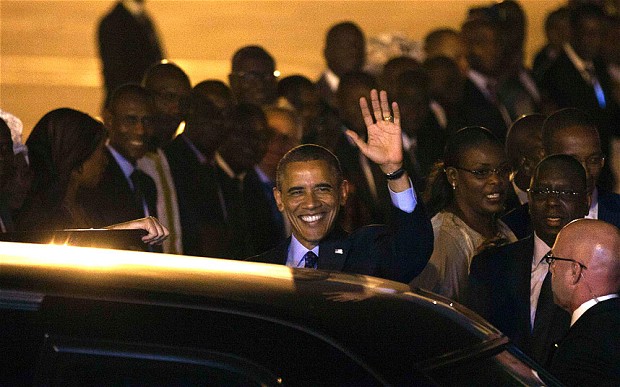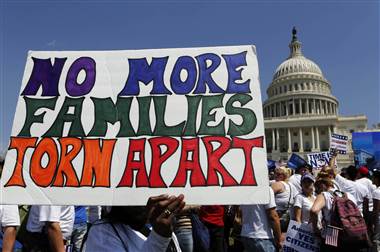Ten years after the 9/11 terrorist attacks, the Department of Homeland Security (DHS) and Immigration & Customs Enforcement (ICE) still insist that their enforcement priorities are terrorists, serious criminals, and persons who pose a threat to national security. But the Transactional Records Access Clearinghouse (TRAC) reports that this claim is misleading. The number of removal cases pending before the Immigration Courts continues to rise, reaching a total of 285,526 at the end of July 2011. This represents an all-time high and a rise of 3.7 percent from three months ago. Only 8.3 percent of the pending cases involved foreign nationals charged with aiding terrorism, criminal activities, and actions adverse to national security. This portion has fallen by 9.1 percent during the last 10 months. Meanwhile, those charged with purely immigration violations made up 90 percent of the cases, with the total number rising from 1.2 million before 9/11 to 1.9 million post-9/11.
To help ease the rising backlog in Immigration Courts, the Obama Administration recently announced that it would aggressively pursue “high priority cases” while focusing less on “low priority cases.” This policy is not an Amnesty Program, is not a deferral of removal program for those who might quality for benefits of the DREAM Act (if passed), and is not an abandonment of U.S. immigration laws. It does not confer any lawful status to the millions of undocumented immigrants present in the United States. It does, however, provide additional guidance to DHS in exercising prosecutorial discretion to ensure that limited resources are spent on the agency’s enforcement priorities.
John Morton Memo
In his June 17, 2011 Memorandum, ICE Director John Morton notes that DHS officials should consider the “totality of the circumstances” in deciding whether to prosecute a case. Morton provides a non-exhaustive list of factors, which ranges from age and the circumstances of the person’s arrival in the U.S. to community ties and cooperation with law enforcement authorities. The memo also describes special factors that indicate whether a case is high priority or low priority.
High priority cases include persons who pose a clear threat to national security; serious felons; repeat offenders; known gang members; and those with a record of egregious immigration violations. In contrast, low priority cases include veterans and members of the U.S. armed forces; long-time permanent residents; minors and elderly persons; individuals present in the United States since childhood; victims of domestic violence, trafficking or other serious crimes; those with serious mental or physical disability; those with serious health conditions; and pregnant or nursing women.
Interagency Process
Department of Homeland Security Secretary Janet Napolitano also sent a letter to Senator Dick Durbin (D-IL) and 21 other senators, on August 18, confirming that the Administration is implementing the Morton Memo. She described an agency-wide expansion of prosecutorial discretion guidelines that instruct their agents to focus on dangerous criminals. She noted that the DHS has made tremendous progress in focusing on high priority cases. For example, in fiscal year 2010, ICE removed 79,000 more persons who had been convicted of a crime than it did in fiscal year 2008. For the first time ever, over 50 percent of the foreign nationals removed from the United States in a fiscal year were convicted criminals.
To continue on this path, the DHS revealed a new interagency process to ensure that resources are focused on the Administration’s highest enforcement priorities. As part of this process, an interagency group of DHS and Department of Justice (DOJ) officers and attorneys, including representatives from DHS, the Executive Office for Immigration Review (EOIR), and the Office of Immigration Litigation at DOJ, will identify low-priority removal cases that should be considered for an exercise of discretion. The review will be conducted on a case-by-case basis and involves nearly 300,000 pending cases that are at the various stages of enforcement proceedings.
Impact on All Stages of Enforcement Proceedings
The interagency group will determine whether pending removal cases are low priority enough to be administratively closed. When a case is administratively closed, it is no longer active and no action will be taken, unless either the government or the foreign national asks for the case to be made active again. Administrative closure does not grant any lawful status. The person is still in removal proceedings, but the case is temporarily suspended and no future hearings are held unless the case becomes active again. Persons granted administrative closure might be able to apply for employment authorization in the United States. With an employment authorization document (EAD), the person can legally work in the United States and obtain a social security number for work. In some states, this allows the person to apply for a driver’s license or other identification. An EAD does not give a person lawful status; it provides only temporary permission to work.
Immigration authorities can also grant deferred action to those who already have a final removal order. When deferred action is granted, no action will be taken to remove the person from the country. The period of time in which a person is in deferred action status is considered to be a stay authorized by the Attorney General and the person does not accrue any unlawful presence during that period of time. Persons granted deferred action are eligible to apply for employment authorization in the United States.
The interagency group will also issue guidance to prevent low priority cases from entering the system in the first place. Going forward, immigration authorities are expected to review the facts of the case before it places the person in removal proceedings. DHS may choose to refrain from issuing a Notice to Appear and referring a low priority case to the Immigration Court.
It is unclear how the interagency group will weigh and consider different factors or when a specific case might be reviewed. Also, just because a case seems to fit in one or more category does not necessarily mean that it will be considered “low priority.”Only the immigration authorities will make that decision. Moreover, Immigration Courts do not have the power to order ICE to exercise prosecutorial discretion and consider a case as low priority.
Prosecutorial Discretion – Myths and Benefits
The latest guidelines on prosecutorial discretion do not offer a safe way for undocumented immigrants to turn themselves into DHS. There is no guarantee that a case will be considered “low priority.” Any person who comes into contact with immigration authorities could still be arrested, detained or even removed from the country. There is no application to be completed, no form to be filed, no filing fee that can be paid, and no specific guidance from immigration authorities as to how and when the cases will be reviewed. As the process develops, more details could become available on official government websites, such as USCIS.gov and USICE.gov.
At best, the Obama Administration has provided a temporary reprieve to those who fall in the low priority categories. But no immigration laws are being suspended or overturned. The Administration has made it clear that it will continue to enforce existing laws. If the Administration follows through on its announcement, however, those who are not terrorists, serious criminals or national security threats are less likely to face imminent removal. Furthermore, the process might reduce the Immigration Court backlog by temporarily shifting low priority cases out of removal proceedings and accelerating high priority cases.
While enforcement officials are instructed to exercise prosecutorial discretion, foreign nationals and their attorneys could also initiate a request for this temporary, limited relief. In some cases, when the DHS does not oppose, Immigration Courts may continue the removal hearing or grant administrative closure if the case is deemed a low priority. When the positive factors outweigh the value of deporting the person, it is often more cost-effective to take the case off the burgeoning Immigration Court docket and focus on those who pose a threat to national security. The latest guidelines from the Administration remind enforcement officials to save dwindling resources for high priority cases.
Nothing in this article should be taken as legal advice for an individual case or situation. The information is intended to be general and should not be relied upon for any specific situation. For legal advice, consult an attorney experienced in immigration law.
About Igbanugo Partners International Law Firm
Igbanugo Partners Int'l Law Firm is based in Minneapolis, Minnesota. It focuses on (1) U.S. immigration law and (2) international trade law in Sub-Saharan Africa.
- Web |
- More Posts(71)







